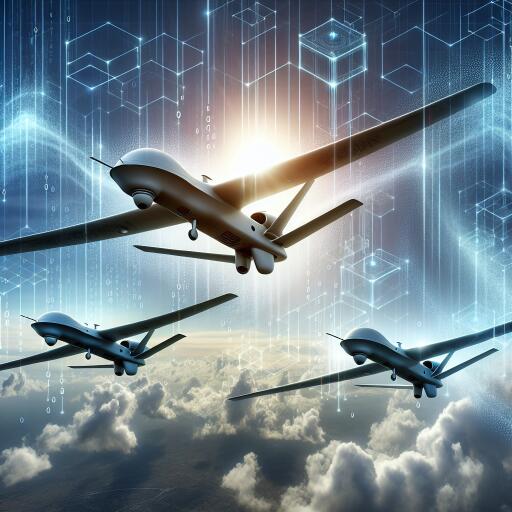Revolutionizing UAV Air Combat: A Dive into Hierarchical Reinforcement Learning
The arena of artificial intelligence (AI) continues to expand, introducing cutting-edge methodologies that not only push the boundaries of technology but also promise to redefine future warfare strategies. One of the most noteworthy advancements at the intersection of AI and military technology is the development of autonomous, decision-making systems for Unmanned Aerial Vehicles (UAVs)—a domain where hierarchical reinforcement learning (HRL) is making significant strides.
Hierarchical reinforcement learning is an evolved form of conventional reinforcement learning, distinguished by its ability to decompose complex problems into manageable subtasks. This subdividing process enables the learner to tackle each aspect of the problem in sequence, thereby streamlining the path to solving highly intricate challenges. The foundation of HRL is task decomposition, which can be orchestrated in two distinct manners: collaborative subproblem-solving or sequential subproblem-solving, where the output of one task feeds into the next.
Recently, researchers have been channeling HRL’s potential towards enhancing decision-making in multi-UAV air combat scenarios. The core objective here is to empower UAVs with the autonomy to make tactical maneuver and attack decisions rapidly and efficiently in the heat of conflict. Given the dynamic and partially observable environment of aerial combat, this is no small feat.
The proposed HRL framework divides the UAV’s decision-making process into two primary layers: flight action and attack decision-making. The former focuses on navigation – controlling speed, altitude, and direction – by processing a wide range of battlefield data. The latter zeroes in on offensive maneuvers, determining the best moments to commence attacks and select targets based on localized information. These segmented actions enable UAVs to execute complex missions with a higher degree of strategic depth and precision.
But how does one train these systems to make split-second decisions under pressure? The approach discussed in a recent paper involves modeling multi-UAV air combat as a DEC-POMDP (Decentralized Partially Observable Markov Decision Process). Through this model, UAVs, or ‘agents’, rely on their individual perception of the environment to make decisions that collectively steer the outcome of the scenario. This method stands in contrast to traditional centralized decision-making processes, offering a more realistic simulation of combat conditions where complete information is rarely available to all parties involved.
Central to this learning process is the experience buffer—a dynamic repository that stores adversarial experiences. By breaking down and prioritizing high-quality adversarial experiences within this buffer, the system can significantly enhance the learning efficiency of UAV strategies. This refined focus on critical learning moments dramatically reduces the complexity and duration of training, bypassing two major hurdles in the traditional reinforcement learning landscape.
To further enhance learning efficacy, the researchers introduced a novel experience decomposition and transformation technique. This method involves breaking down complex tasks into distinct stages, thereby simplifying the UAVs’ learning process. By dissecting each round of combat into smaller, manageable experiences and differentiating these based on outcomes (such as downing an enemy UAV), the system can streamline the adaptation of strategies across varied combat scenarios.
The implications of deploying HRL in UAV air combat are profound. Beyond the immediate tactical advantages, this technology heralds a shift towards highly autonomous, intelligent systems capable of complex decision-making in real-time. As UAVs continue to play increasingly central roles in military operations, the integration of advanced AI technologies like HRL will be crucial in maintaining strategic superiority.
While the promise of HRL in enhancing UAV combat capabilities is immense, it’s important to navigate this evolving landscape with ethical considerations and strategic foresight. The transition towards AI-driven warfare demands rigorous oversight, ensuring that these advancements serve to protect and preserve rather than destabilize and destruct. As research in this area progresses, the focus must remain not only on what AI can achieve but also on how it aligns with broader humanitarian and ethical standards.
In conclusion, hierarchical reinforcement learning is reshaping the future of UAV warfare, offering a glimpse into a world where autonomous air combat is not just possible but highly efficient. As these technologies continue to mature, their integration into military strategies will undoubtedly redefine the art of warfare in the digital age.










